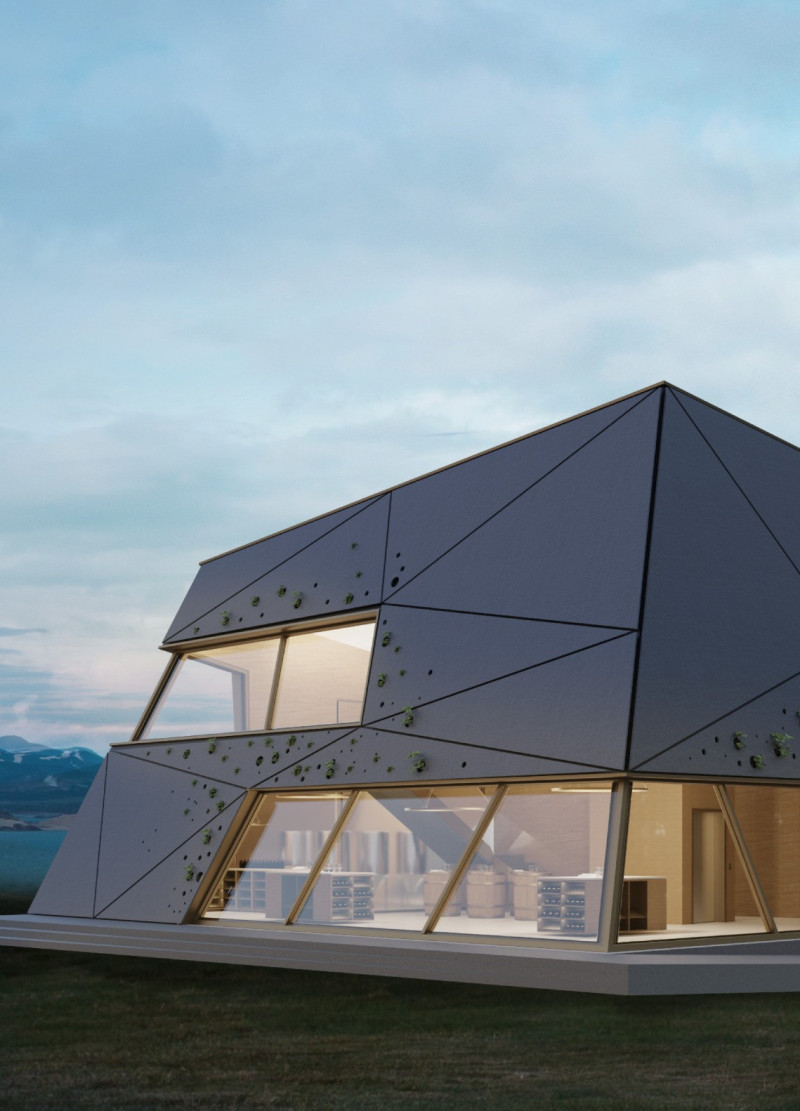5 key facts about this project
The core function of this architectural project is to provide versatile spaces that cater to a variety of community needs. It includes areas intended for both public engagement and private activities, demonstrating a nuanced understanding of how different spaces can coalesce within a single structure. The layout is meticulously structured to encourage movement and interaction, with open areas that facilitate gatherings while also providing quieter spaces for reflection or study. This thoughtful arrangement contributes to the overall usability of the building, ensuring it meets the diverse requirements of its occupants.
Key architectural elements of this project include a comprehensive façade that thoughtfully integrates both form and function. The use of large glazing panels allows natural light to penetrate deep into the interior, creating a warm and inviting atmosphere while also establishing a visual connection between the inside and outside environments. This approach to transparency not only enhances the user experience but also signifies a commitment to openness and accessibility. Additionally, the strategic placement of overhangs and other architectural features provides protection from the elements, creating comfortable transitional spaces that invite people to enter and explore.
Materials play a crucial role in the overall design narrative. The project employs a blend of durable and sustainable materials, including reinforced concrete and local stone, which root the building within its geographical context. These choices not only contribute to the environmental sustainability of the structure but also enhance its tactile qualities, offering a contrast to the sleek surfaces of the glass elements. The interplay between different materials adds depth to the design while reinforcing the building’s longevity and resilience.
Unique design approaches can be observed in the way the project addresses sustainability and environmental concerns. The integration of green technologies, such as solar panels and rainwater harvesting systems, demonstrates a forward-thinking mindset that prioritizes energy efficiency and environmental stewardship. These elements reflect a broader architectural trend that seeks to minimize ecological impact while enhancing the resilience of built environments. Furthermore, the strategic landscaping surrounding the project incorporates native flora, contributing to local biodiversity and creating pleasant outdoor spaces for community use.
In examining the interior, attention is given to creating spaces that resonate with their functions. Flexibility is a key aspect of the design, with multifunctional areas that can adapt to various uses, from workshops to exhibitions. The choice of furniture and interior finishes is deliberate, aimed at fostering a sense of comfort and belonging among users. By considering how people will interact with these spaces on a daily basis, the architectural design enhances the communal experience, inviting users to engage more deeply with their surroundings.
The architectural design underscores an ongoing dialogue between the structure and its context, engaging with both the natural landscape and the urban fabric. It serves not just as a building but as a community hub, where diverse activities can flourish, reflecting the unique identity of its location. By prioritizing human experience alongside formal aesthetics, the project ultimately advances architectural ideas that transcend mere utility.
For those interested in delving deeper into this project, exploring the architectural plans, sections, and designs will provide a comprehensive understanding of the concepts that drove its creation. The integration of user-centric design with environmental considerations underscores the project's relevance in contemporary architectural discourse, making it a noteworthy example for future developments in the field. Engaging with these elements offers a richer perspective on the architectural ideas that shape our environments.


























